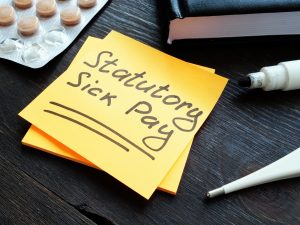Introduction
A company pays corporation tax on capital gains arising on the disposal of chargeable assets. Most capital assets are chargeable with a number of minor exceptions, e.g. cars. The definition of a car does not extend to vans and other commercial vehicles, which may give rise to chargeable gains where they are sold at a profit.
Individuals pay capital gains tax (CGT) at a flat rate of 18% or 28% depending on the level of their total taxable income, whereas companies include the gains as part of their Profits Chargeable to Corporation Tax and so pay Corporation Tax (CT) on gains. The rules for computing gains for companies are similar to the rules that apply to individuals. However, companies can claim indexation allowance for assets owned up to 31 December 2017. In addition, companies are not entitled to an annual exemption and are not eligible for many of the reliefs that individuals can claim, e.g. entrepreneurs’ relief.
Computation of Gains
The base for a computation starts with sale proceeds from which can be deducted any incidental costs of sale, such as solicitor’s or surveyor’s fees, etc. The next step is to deduct the cost of the asset which will also include any enhancement expenditure and other incidental costs of acquisition, including legal fees and stamp duty paid. That gives the unindexed gain. From this indexation allowance is deducted. This indexed gain is subject to CT
Indexation Allowance
The indexation factor is calculated by taking the movement in the Retail Price Index (RPI) between the date of acquisition of the asset and 31 December 2017 . The RPIs are available online. The indexation factor is computed using the formula: (RPI 31 December 2017 − RPI at acquisition) / RPI at acquisition.
The result of this is rounded to three decimal places using normal mathematical rounding (or can be expressed as a percentage). This rounding does not apply to the disposal of shares acquired after 31 March 1985. The cost of the asset is multiplied by the indexation factor, to produce the indexed cost.
Enhancement Expenditure
Enhancement expenditure is added to the “base cost”, or allowable cost, of the asset. It may need to be indexed separately if the enhancement occurs at a different date to that of the acquisition of the asset.
Capital Losses
Capital losses are computed in the same way as capital gains, except that indexation cannot create or increase a capital loss, it can only reduce a gain to zero.
Capital losses can be used against other current year capital gains. Any unrelieved capital losses are carried forward indefinitely and set against future chargeable gains. Companies within a group for capital gains purposes can elect to transfer losses arising in an accounting period to another company in that group within 24 months of the end of that accounting period (S171A TCGA 1992). This election must be made to HMRC in writing.
Rollover Relief
This is a crucial relief for companies. Rollover relief applies when trading assets are sold and new assets are purchased using the proceeds. It is available to both companies and groups of companies.
A capital gain on the disposal of a trading asset can be deferred by rolling it over against the cost of another business asset. The capital gains tax cost of the new asset is reduced by the gain so when that asset is sold the gain comes back because of the reduced deductible cost.
The amount of the relief is restricted when the proceeds from the disposal of the first asset are not fully reinvested in the new one.The assets do not have to be of the same type but must be used, and only used, for the purposes of the trade:A company may deduct the indexation allowance (up to 31 December 2017) before rolling over its gains.
Qualifying conditions for rollover relief
Both assets must be used for the purposes of a trade.
There is a window during which the new asset(s) must be purchased; this starts 12 months before the disposal and ends 3 years after. The new asset must be brought into use in a trade as soon as it is acquired, although HMRC will allow a short gap if improvements / alterations are needed to the new asset and it is not used for anything else in the meantime.
Qualifying assets for rollover relief
- A building or part of a building or structure occupied (as well as used) for the purpose of a trade.
- Any land occupied (as well as used) for a trade.
- Fixed plant or machinery which does not form part of a building or structure.
- Roll-over relief does not apply to the disposal of shares and securities
SRC-Time are one of the South East’s leading accountancy firms in advising the self-employed and partnerships in all aspects of their tax affairs and we are able to assist in any issue raised above.
Our expert team is available to provide you with advice and can be contacted on 01273 326 556 or you can drop us an email at info@src-time.co.uk or speak with an account manager to get any process started.

